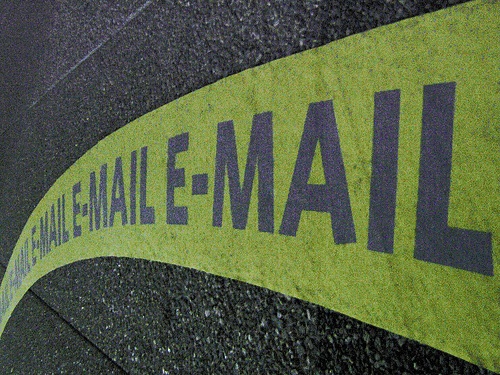
Social media may get all the hype, but good old-fashioned e-mail still does the lion’s share of the work in getting your nonprofit mission in front of your supporters. E-mail provides a low-cost way to ensure your current – and future – supporters can get relevant information about your program impacts, your collaborative needs, and, of course, your fundraising work to keep the whole operation moving forward.
Gone are the days when the effective nonprofit composed a Microsoft Word document with lots of clip art and mailed it along as an attachment to an e-mail, calling that the “e-mail newsletter.” Now, we carefully gather permission-based contact information and structure at least a few options for how supporters may want to stay in touch. The key to successful management of e-mail campaigns is to start by assuming the reader’s perspective. How can you, the hypothetical reader, get control of the relationship? If you, the nonprofit, aren’t giving the reader a way to do so, you may miss your chance to bring in some would-be allies.
Nonprofit communications can often be filled with what the organization thinks is really important (i.e., “We’ve gotta send our fourth advocacy blast about the sixth subcommittee meeting right now!”). A better method is asking your supporters to define what is important to them and then providing it in a timely, respectful and engaging manner.
The right tools for your nonprofit can improve your e-mail open/click rates (and help you measure them!) as you engage your supporters in what is interesting to them. Nonprofits with larger technical staffs may have proprietary, database-integrated solutions, but that isn’t the case for most organizations. If you need the power to analyze what works for keeping your subscribers actually forwarding your e-mails on to others rather than exiling them into the spam folder, you need some help. Here are a few of the usual suspects that nonprofits turn to for that help.
Sign up for our free newsletters
Subscribe to NPQ's newsletters to have our top stories delivered directly to your inbox.
By signing up, you agree to our privacy policy and terms of use, and to receive messages from NPQ and our partners.
Constant Contact is a stalwart in the field with a free trial and a nonprofit discount. You can create multiple e-newsletters and let your subscribers do their own data entry, unsubscribe from one list and join another, all without asking your staff or volunteers for their time. Some sample e-mail formats you may want to consider include monthly general news, program-specific news, donor updates and/or action alerts. Not every supporter wants every piece of information. Give them options and let them pick.
MailChimp is a newer entry, but it’s still old enough to have had the bugs worked out. MailChimp also offers a free level of service (many of these services do) in the hopes that you’ll bulk-up your contacts list and decide to pay for the ability to send additional e-mails. The user-friendly design has a lot of power behind it, so if you do have an eye for what looks good, you can certainly use services like these to make a good presentation. But remember, good looks are nice, but good content is king.
Network for Good (and other providers) offer e-mail list management and sending capacity integrated with fundraising services if you want to take the development effort up a notch. Solutions like EmailNow are more complex, but also more powerful as you start building relationships and improving your long-term connections.
Nonprofits still using Outlook and Word mail merges may wonder if they need to outsource this work. There are many good reasons to do so. The top reason is actionable analytics. As you give more choice to your supporters, inevitably some strategies will work better than others, and your tech tools allow you to see who is forwarding messages, when users change lists, and what links generate clicks. If you provide information that recipients find useful, your allies become your advocates, and your e-mail solution earns its keep.
Steve Boland lives at the intersection of community, policy and technology. Steve holds a Master of Nonprofit Management degree from Hamline University, and is a regular contributor to Nonprofit Quarterly. He can be reached at steve@steveboland.com or twitter.com/steveboland.











